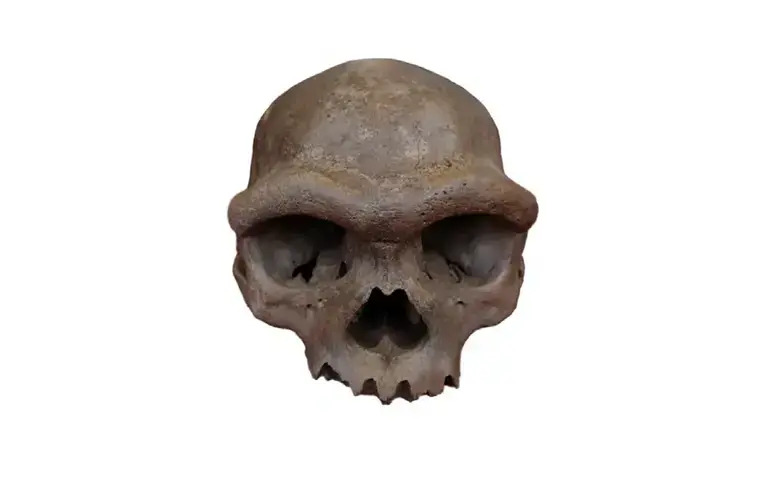Ancient Chinese Skull Challenges Established Theories of Human Evolution

An ancient skull discovered over three decades ago along the banks of a river in central China is now reshaping our understanding of human origins and evolution.
This heavily damaged fossil, which has persisted at the water’s edge, may significantly alter the timeline of humanity’s development.
Recent studies have revealed that the fossil is approximately one million years old, with features indicating close ties to Denisovans and a mysterious figure known as the ‘Dragon Human.’ This breakthrough pushes back the estimated emergence of modern humans by about 400,000 years, according to CNN.Scientists have hailed this discovery as groundbreaking.
In a study published in the journal Science, researchers used cutting-edge digital techniques to reconstruct the skull, known as Yuanxian 2.
Found in Hubei Province in 1989, it long remained unclassified due to pronounced deformities.
Employing computed tomography, light visualization, and virtual methods, scientists restored its original shape and compared it with hundreds of other samples, concluding that it belongs to a previously unknown human lineage.The findings suggest the fossil shares traits with Homo longi, or the ‘Dragon Man,’ and also with Denisovans, enigmatic ancient humans about whom many questions remain.
This discovery challenges existing notions of when different human subgroups appeared.
Researchers emphasize that, a million years ago, our ancestors had already diverged into separate branches, indicating a much earlier and more complex evolutionary split than previously thought.According to new reconstructions, Denisovans and modern humans share a common ancestor around 1.32 million years ago.
Neanderthals, once considered the closest relatives, diverged even earlier—about 1.38 million years ago.
This means Denisovans are closer relatives to Homo sapiens than Neanderthals, who show traits similar to Homo erectus, but also possess features like flat, shallow cheekbones.
This led scientists to associate the specimen with Homo longi.Researchers believe this evidence questions traditional theories about the divergence of three human lineages—Homo sapiens, Neanderthals, and Denisovans—around 700 to 500 thousand years ago and suggests an earlier origin for these groups, possibly stemming from Homo erectus, who lived over 1.5 million years ago.
Future analysis of another skull found in 2022 in Yunnan is expected to clarify these evolutionary relationships further.
Mandarin-speaking scientists agree that East Asia continues to hold vital clues to understanding later stages of human evolution.

